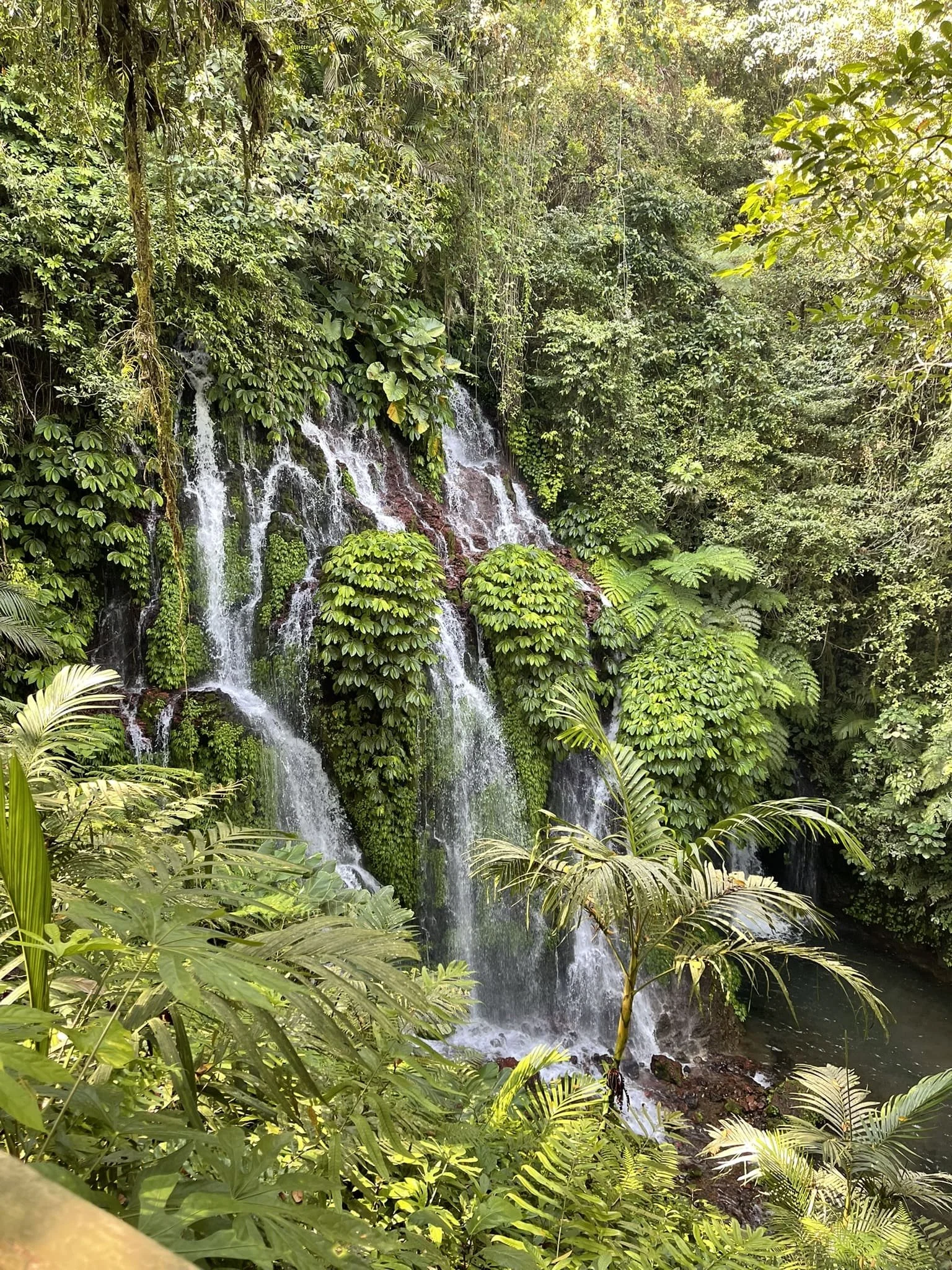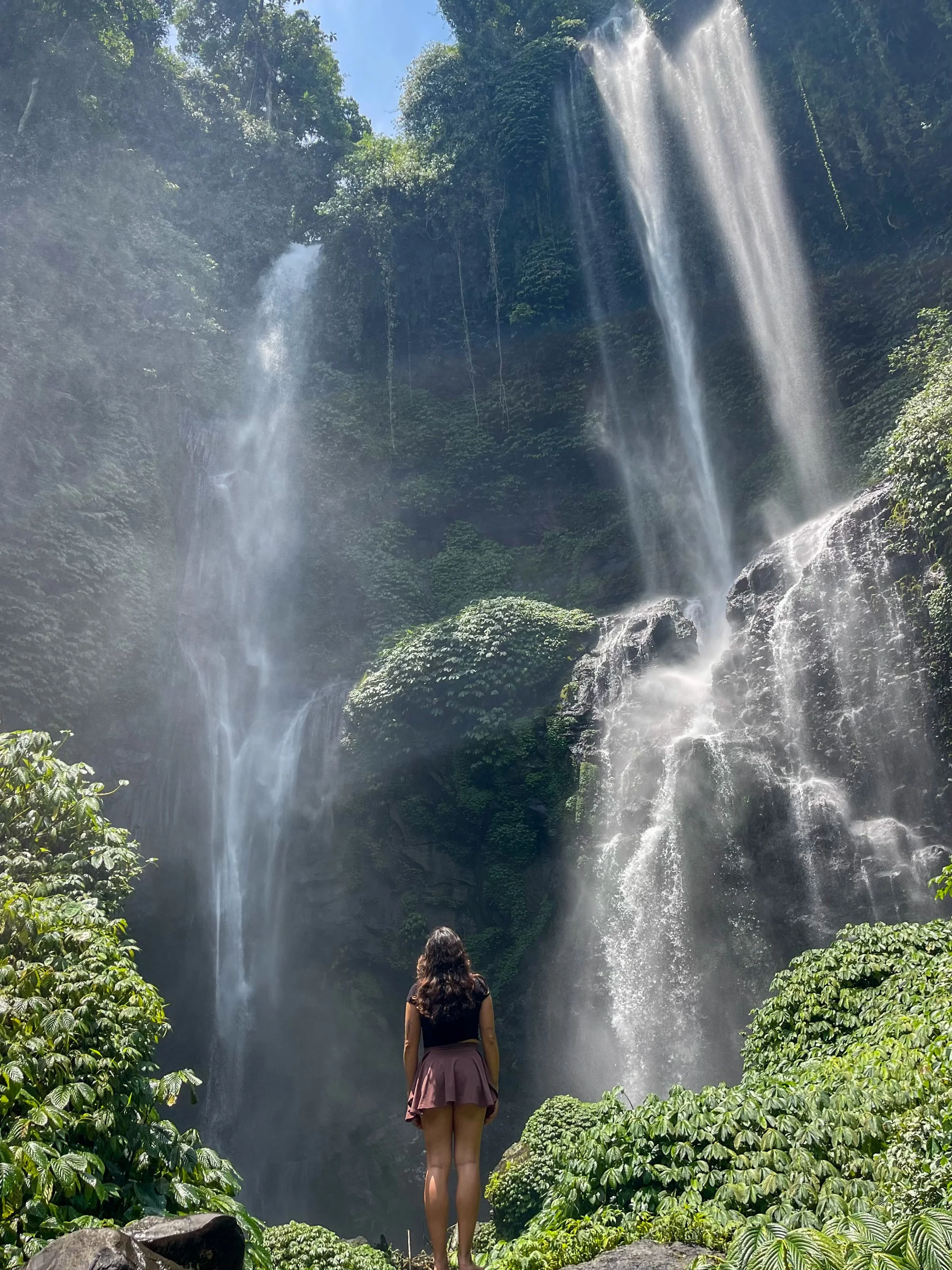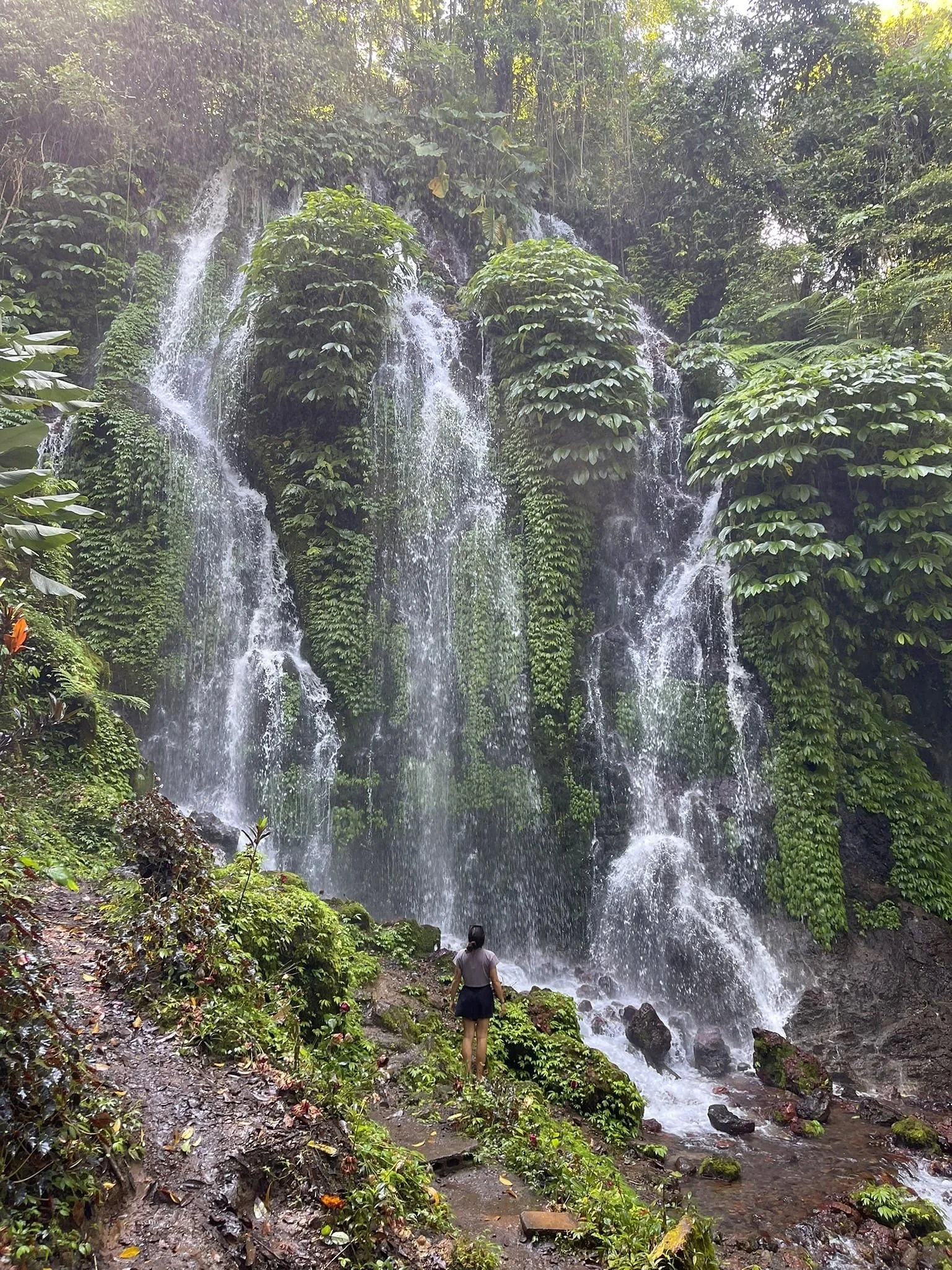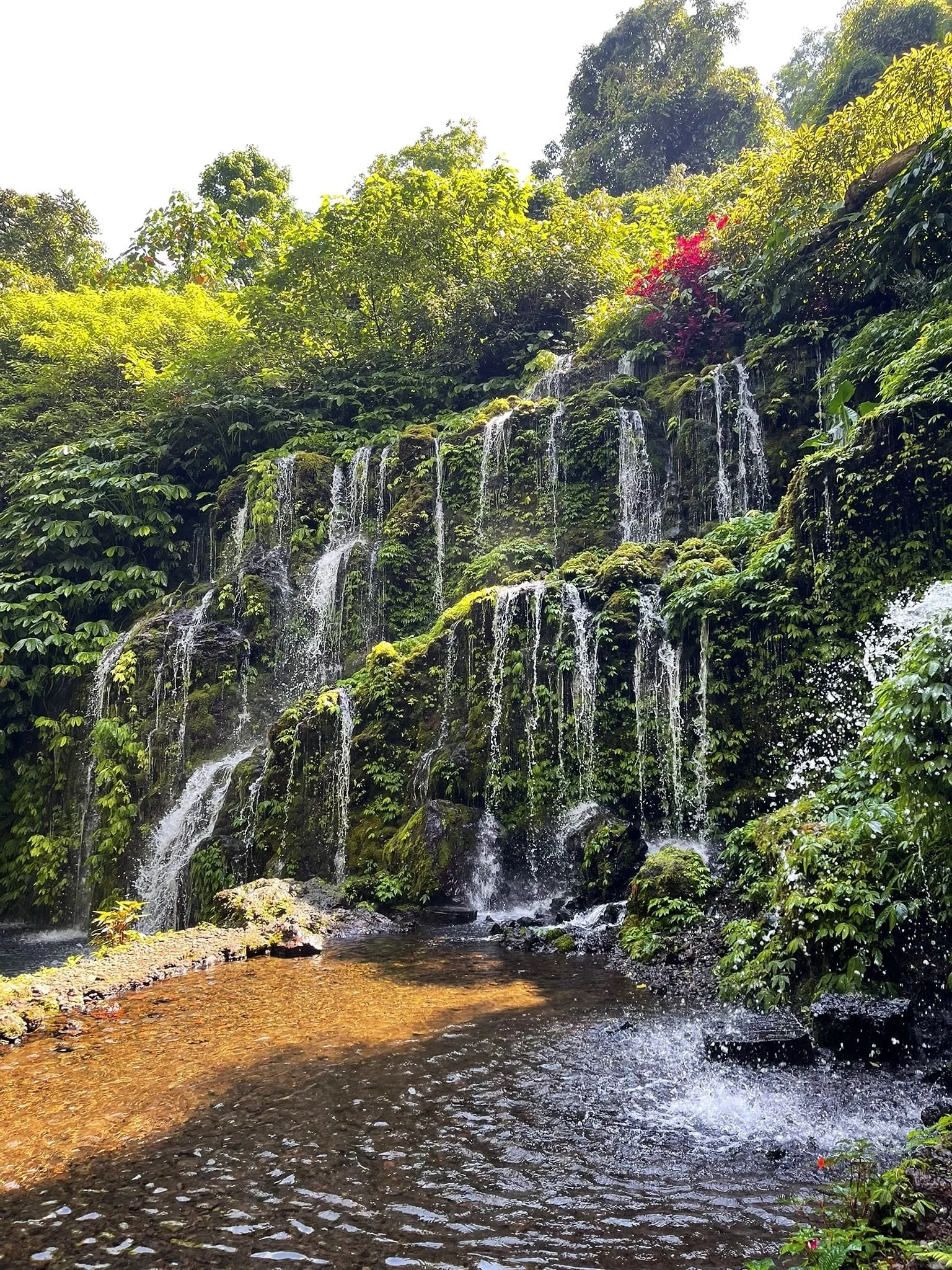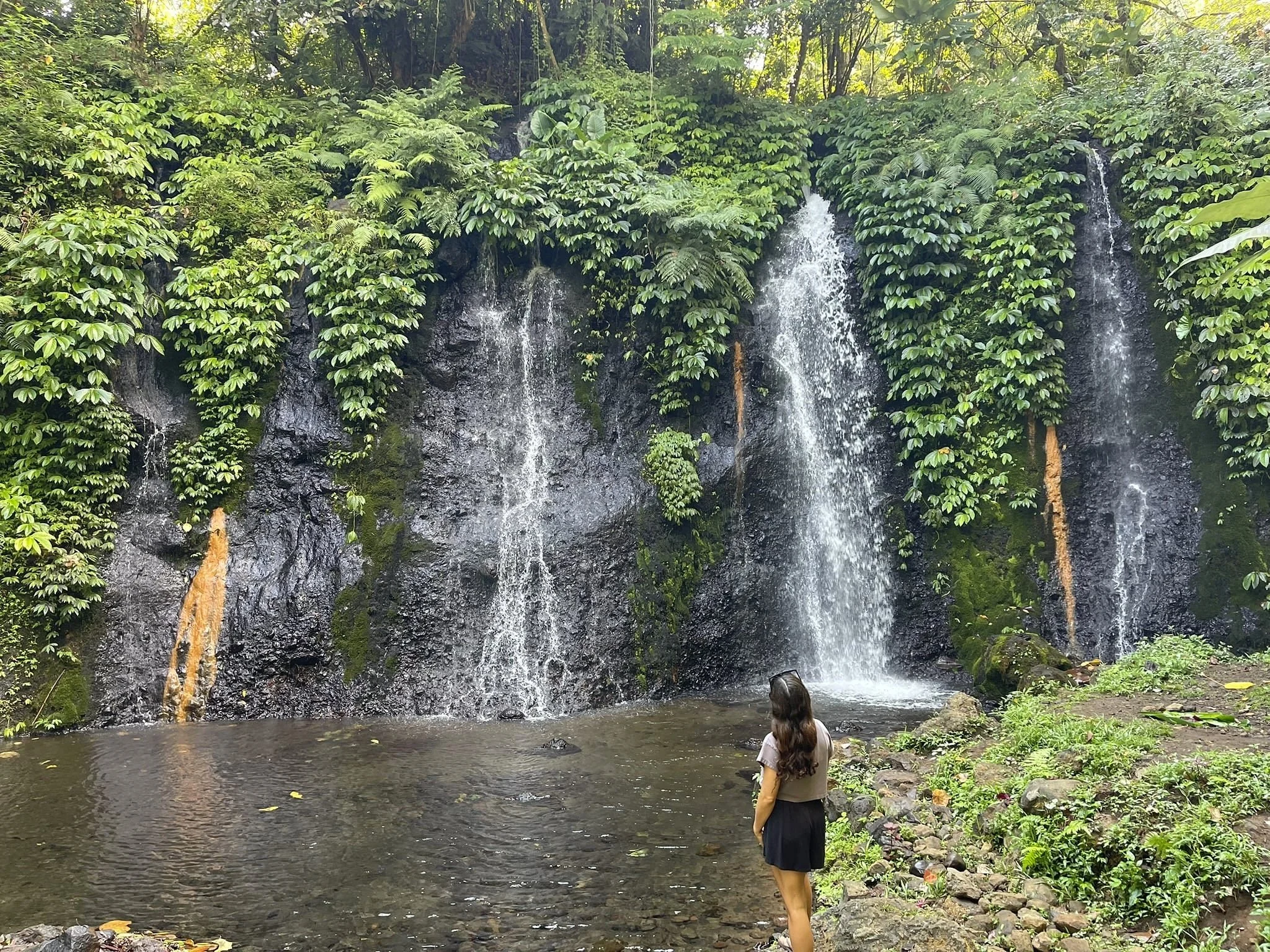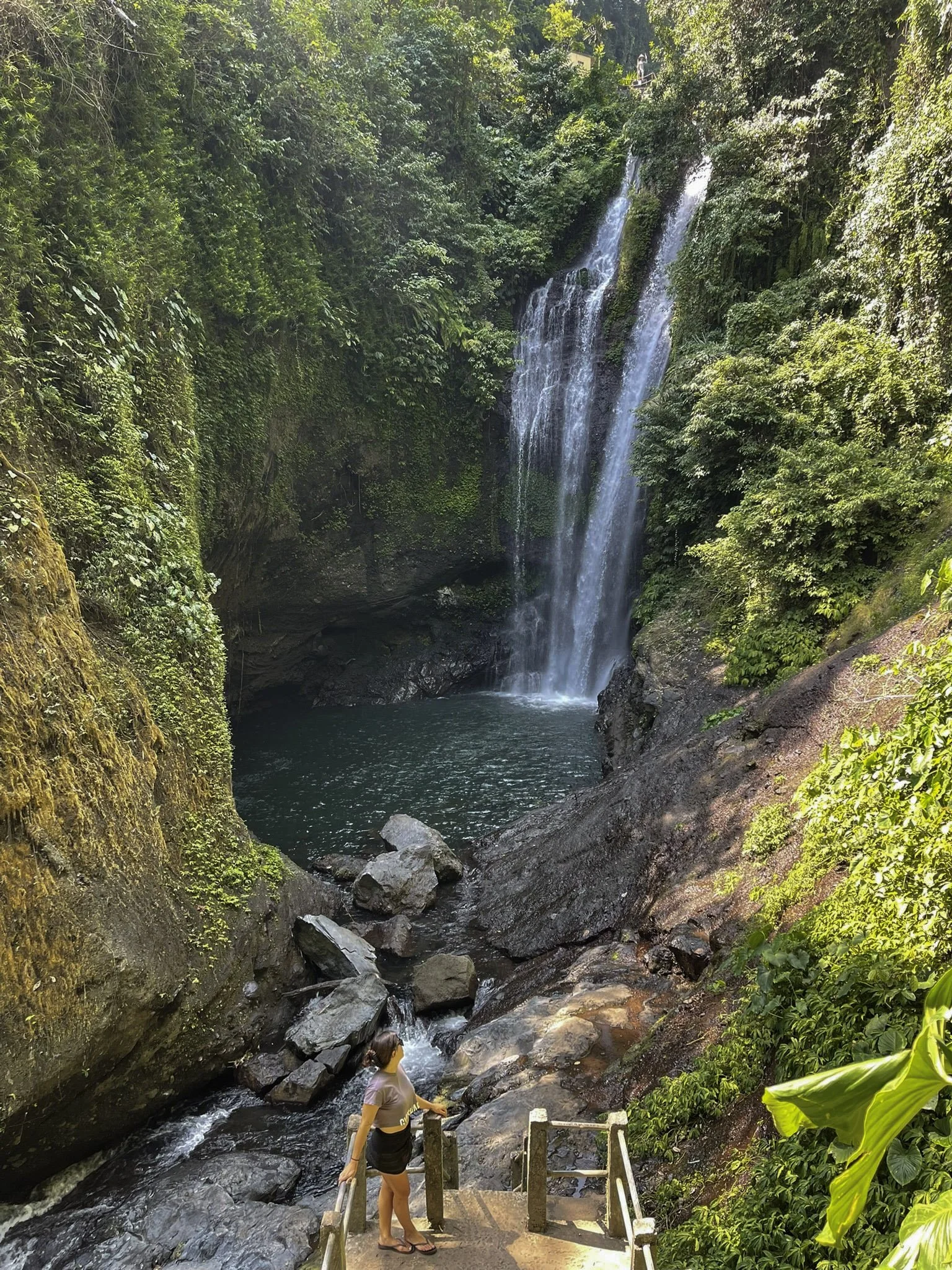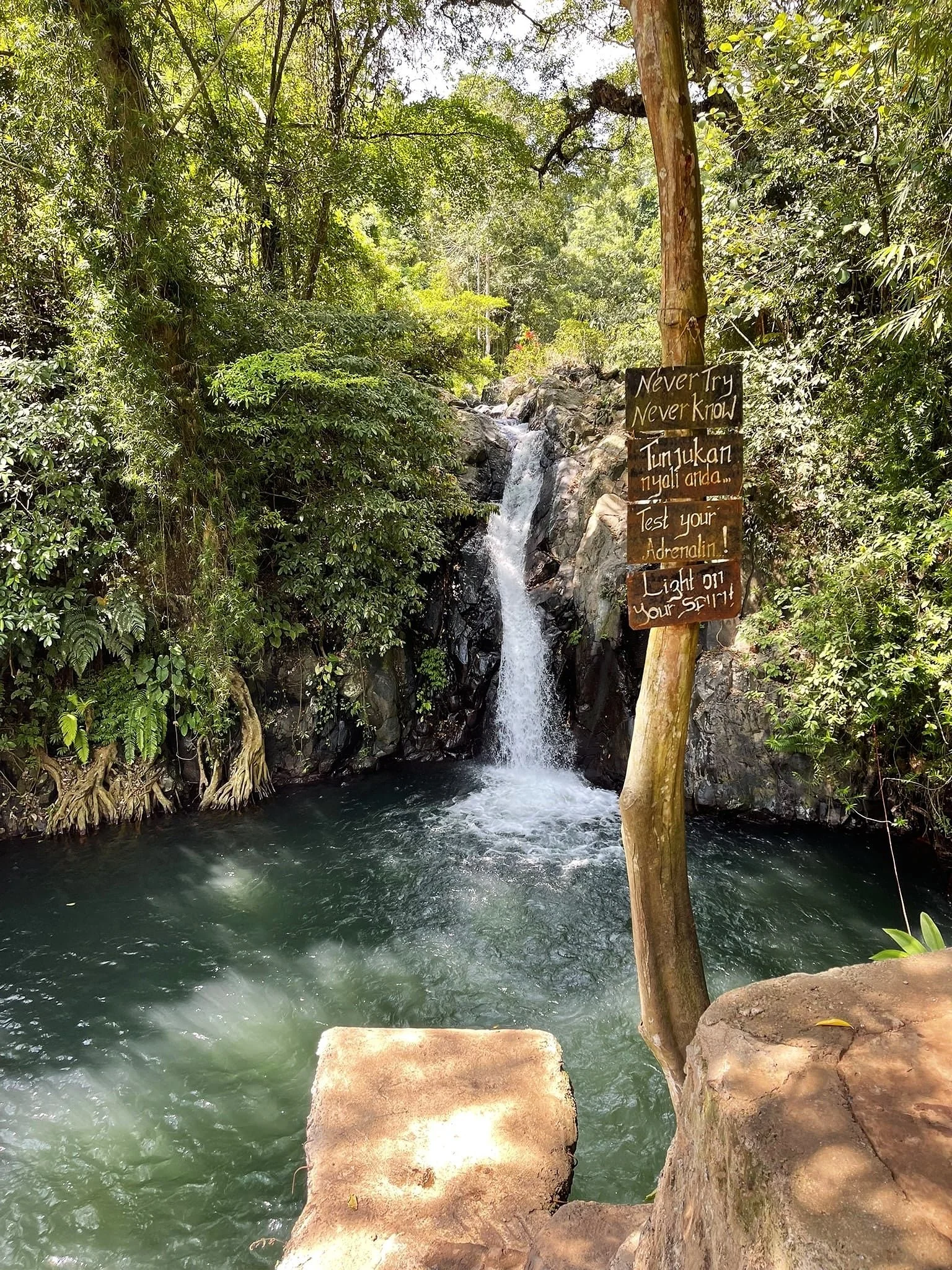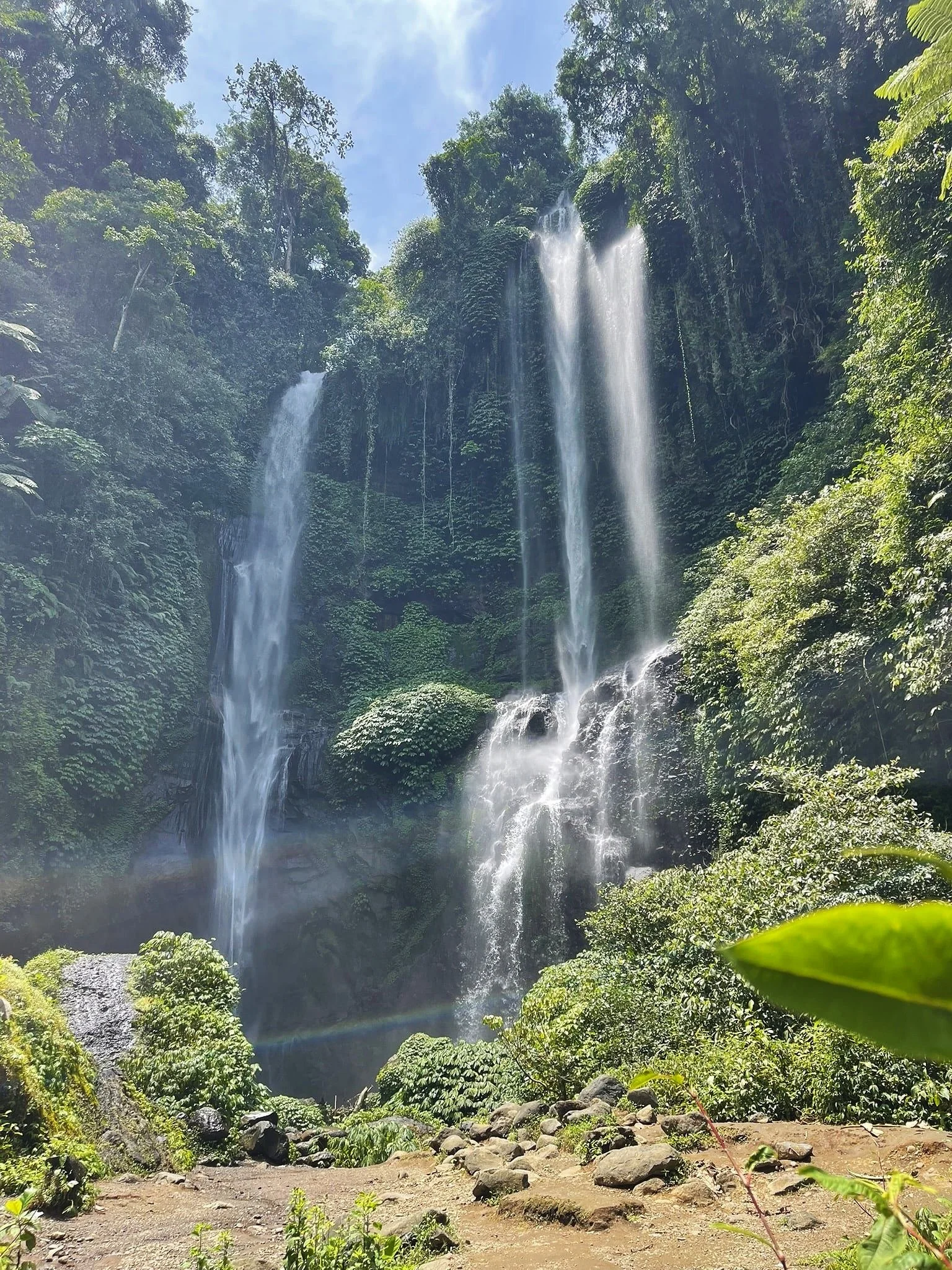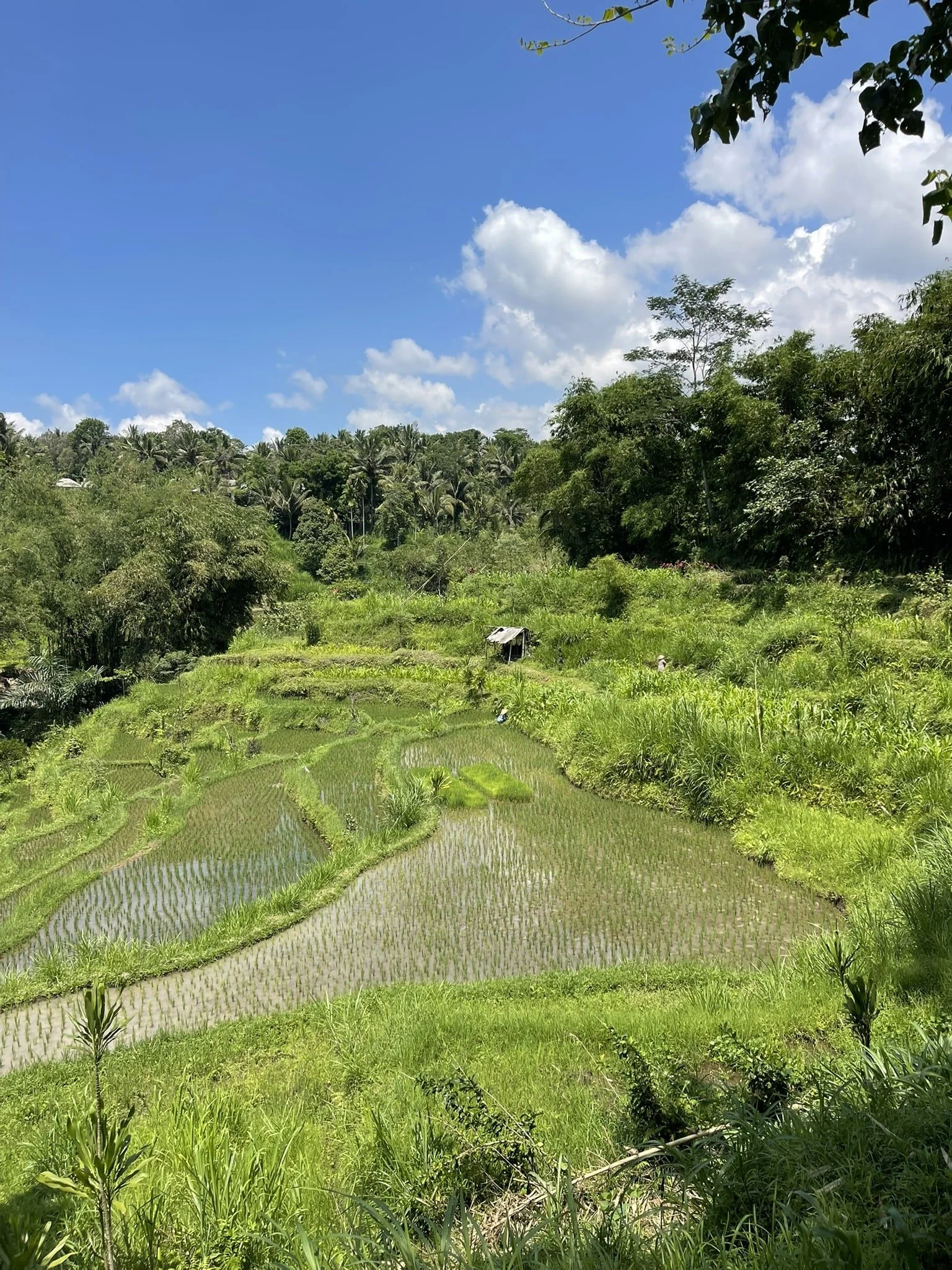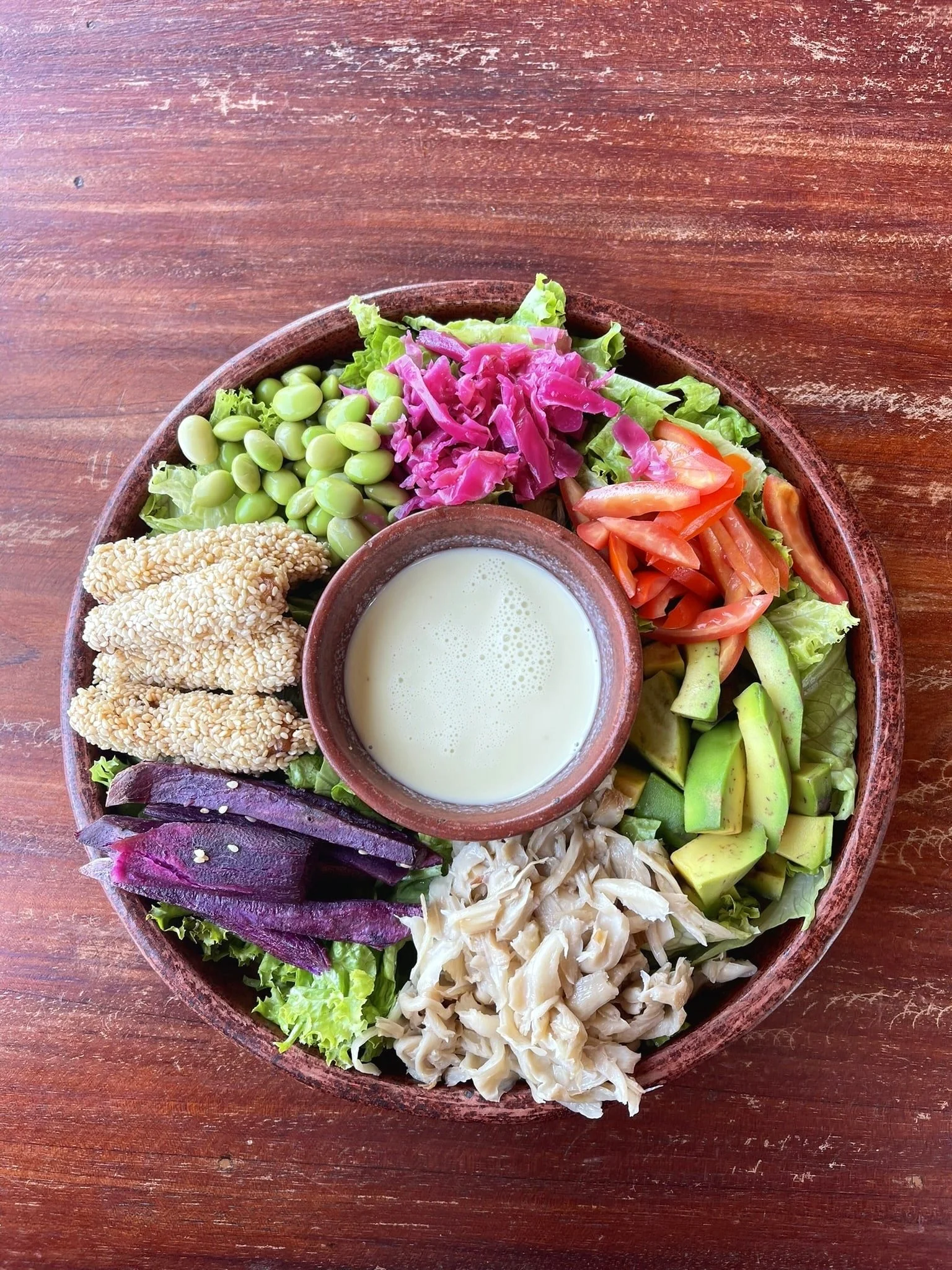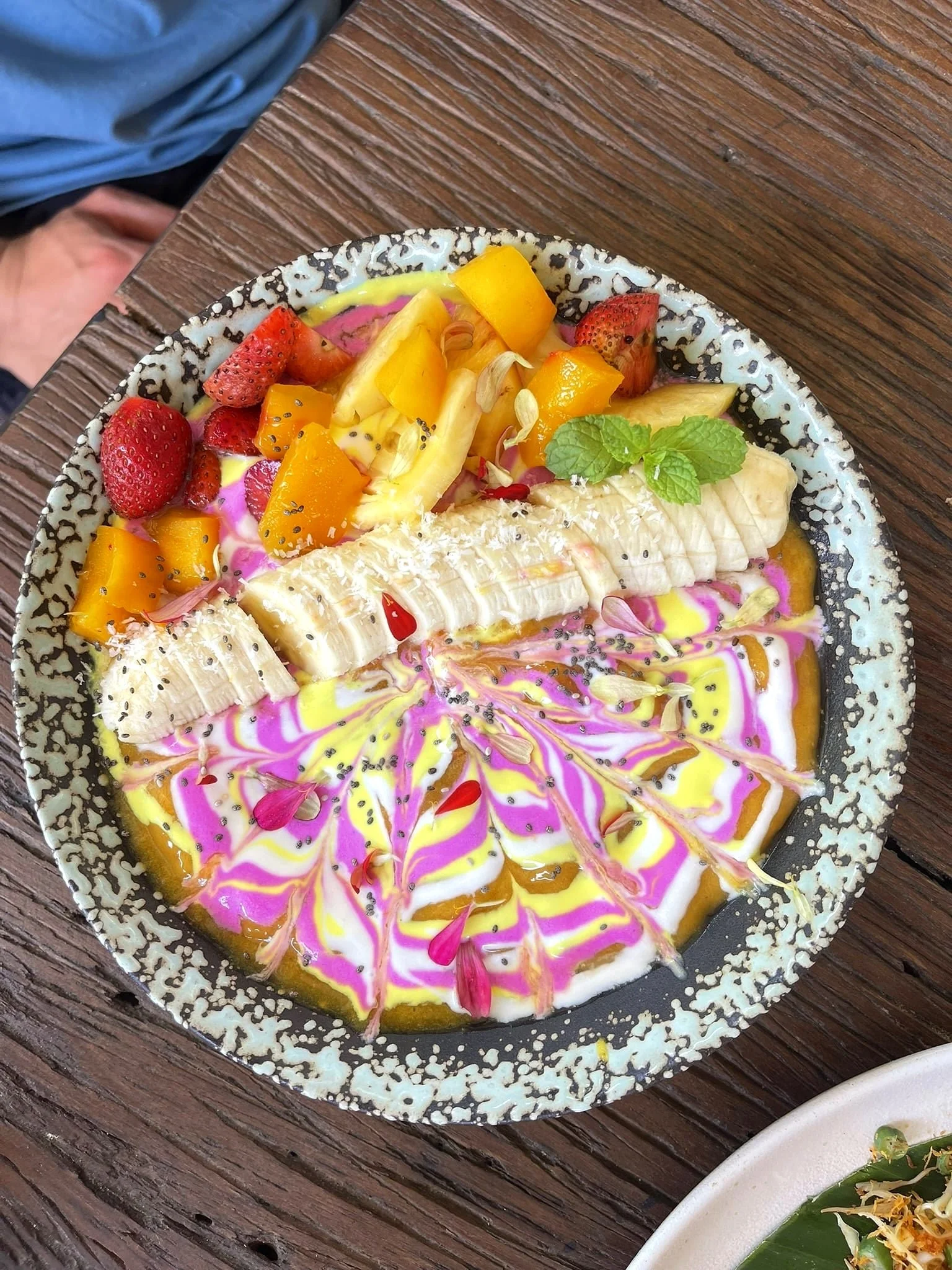The 4 Best Waterfalls in Munduk, Bali
Munduk, a small village in northern Bali, is surrounded by lush jungles that flourish with life, concealing some of the island's most stunning waterfalls—perfect for those ready to trek through the wilderness and uncover Indonesia’s beauty. If you are heading to Munduk soon and wondering which waterfalls are worth visiting, look no further. After spending time in northern Bali, I have put together a list of the best waterfalls to explore in and near Munduk. The following list is in no particular order!
Oh & as always practice sustainable tourism while traveling, please :) Be sure to take any trash, plastic, etc. with you when you leave.
Disclaimer: This post contains affiliate links. If you click through and make a purchase, my blog may receive a commission at no additional cost to you.
The 4 best Munduk Waterfalls
What To Bring to the Waterfalls:
Cash for the entrance fee (IDR). The cost of the waterfalls near Munduk varies from 20,000 to 50,000 IDR.
A swimsuit and towel! – For swimming and drying off. You can swim in the Munduk waterfalls! A blanket for laying out on the rocks around the pool is a good idea too, if you plan to stay for a few hours.
Water shoes or some old sneakers to protect your feet while walking around. This is not a necessity, but it is a great addition to protect your feet and prevent slipping. The walkways can be quite steep down to the falls, and sneakers make it easier to walk back up these steep paths — it was tough to walk up in wet flip-flops with my feet slipping. The floor of the waterfall pools can be a bit rocky, so having water shoes could make swimming and exploring more enjoyable.
A waterproof camera or GoPro to capture epic moments near the falls. Something to dry your lens as well!
Sunscreen and mosquito spray. There are a lot of shaded areas at the waterfalls, but some sections are exposed to the sun.
Reusable water bottles and snacks—Some waterfalls do not have any shops or petrol. Be sure to pack plenty of water and electrolytes for your day at the waterfalls—coconut water is always a great option.
Mistakes can happen, especially when trekking and walking around slippery areas, so I recommend always having some form of travel medical insurance. Safety Wing is by far the best travel medical insurance. It has saved me numerous times by covering hospital visits when I was sick during my travels in Asia.
Emergency Contact Number: Police: +62 110 | Fire: +62 113 | Ambulance: +62 118 or +62 119 | You can find a complete list of Bali Emergency #’s here.
Get an eSIM—so you do not get lost navigating your way. I always use Airalo for my eSim.
#1: Banyu Wana Amertha Waterfall
Banyu Wana Amertha Waterfall is a series of 4 waterfalls within one area, located in Wanagiri, a village in Northern Bali. The waterfalls are a short and easy trek, each one uniquely different from the others. It is less busy than the other waterfalls in Bali, and if you read the reviews, you can see that most people are the only ones there when they visit! When I was there, I saw very few people and had most of the falls to myself. Each of these waterfalls is open for swimming, unlike the other ones in Bali, and they are perfect for all ages to enjoy.
Waterfall #1 is definitely the most underwhelming of the four, being just a small trickle pouring from the greenery above. However, the surroundings are flourishing with plant life, and the water pool in the middle has a pretty blue tint, making the landscape at this waterfall quite beautiful and serene. You can climb around and behind this waterfall and explore every nook and cranny it has. It is the perfect warm-up waterfall for the trek.
Waterfall #2 is just a short walk over from the first falls and is breathtaking. It consists of many smaller falls cascading over three tiers of lush greenery into a shallow pool below. You can walk around in the pools below these falls to cool off, but they are not deep enough to swim. They are the perfect depth for kids to splash around in!
Waterfall #3 is another smaller waterfall with four cascades pouring over a black rock face into a pool below. Similar to the other falls, this waterfall has beautiful green leaves decorating it and a shallow pool below it.
Waterfall #4, or Banyu Wana Amertha, is the main attraction on the trek, as it is the tallest and largest waterfall along the route. Multiple powerful cascades pour over the rock face, with lush green leaves, plants, and vines peeking out from every crevice. You can also see two smaller cascades pouring out to the bottom right of the rock face. This waterfall was probably one of my favorites in Bali overall. The greenery over the waterfall’s rock face and the number of cascades just added to its stunning beauty. You can capture some truly epic photos here since the water pool below is shallow enough to walk through. There is also plenty of space for swimming and relaxing in the pools.
Location: Banyu Wana Amertha Waterfalls are in Wanagiri, and the exact location is here.
Hours: 7:00 AM - 5:30 PM
Entrance Fees:
The entrance fee to Banyu Wana Amertha Waterfall (including all 4 falls on the trek) is 40,000 IDR (2.55 USD). You do not need a guide for these waterfalls.
Motorbike parking: 2,000 IDR (0.13 USD) | Car parking: 5,000 IDR (0.32 USD)
If you do not want to walk along the paths to the waterfalls, you can hire a motorbike to take you through most of it. It is 50,000 IDR (around 3 USD) roundtrip or 35,000 IDR (around 2.00-2.25 USD) for one way.
The Trek:
To get to the waterfalls, you must first walk 10 to 15 minutes down a beautiful stone path through a garden full of flowers and green plants until you reach the main area with signs directing you to the falls. This first walk is only downhill in some parts, but overall easy trekking. There were warungs and shops in this area, but none were open while I was there (8:45 AM - 10:00 AM).
Once at the central area, you will see a large sign that points to which way each waterfall is. To the left are waterfalls 1 and 2, and to the right are waterfalls 3 and 4. From this sign, it is another 5 to 10-minute walk to reach each waterfall. Waterfalls 1 and 2 involve a steep stone pathway down, while waterfall 3 has the steepest descent. Waterfall 4 has some stone stairs to climb down to reach it. All of the paths are entirely doable!
For a more detailed guide on visiting Banyu Wana Amertha Waterfall, head here!
#2: Banyumala Twin Waterfall
Banyumala Twin Waterfall features two streams of water cascading down a rocky face. Many plants, leaves, and flowers flourish along the waterfall’s rock face. Although this waterfall has become quite popular in recent years, it is still SO worth the visit. This tall waterfall is beautiful, with the perfect pool for swimming around in to cool off. There is plenty of space, so even when the area becomes slightly crowded, you can spread yourself out and relax in another area. There is a unique photo-op spot, where two bridges run parallel in front of the waterfall. You can stand on one bridge, while the person taking your photo can stand on the other. It is also a unique spot to capture a photograph with fewer people in the background.
Location: Banyumala Twin Waterfall is in Wanagiri, and the exact location is here.
Hours: 7:00 AM - 6:00 PM
Entrance Fees:
The entrance fee to Banyumala Waterfall is 50,000 IDR (a little over 3.00 USD). You do not need a guide for these waterfalls.
Parking: 2,000 IDR (0.13 USD)
If you do not want to walk along the steep path to the waterfall stairs, you can hire a motorbike to take you through most of it (25,000 IDR or around 3 USD).
The Trek:
To get down to the waterfall, you must first hike 10 to 15 minutes along a steep stone pathway down to a set of stairs. The path is easy going down, but not so fun on the way up, especially with the humidity. If you do not want to walk along this section, you can hire a motorbike to take you (25,000 IDR).
After you walk along this section, you will reach the waterfall entrance, where you will pay the entrance fee and begin walking down the steps to Banyumala Waterfall. This next area consists of stairs of all different heights, followed by a slippery and muddy dirt path. Be very careful walking across the muddy section, so that you do not fall. There is a railing to help you along the way. Rainy season would make this section nearly impossible. Going down the entire trail is not too hard, taking around 25 to 30 minutes, but coming back up is tougher and may take longer.
#3: Aling Aling Waterfall
The Aling Aling Waterfall trek is a stunning natural spot in Sambangan, Bali, offering cliff jumping, swimming, and more. Along the path, you will encounter four separate waterfalls, making it an ideal spot to spend a few hours in the morning with family. There are some fantastic swimming areas to relax and cool off, with some shallower sections perfect for children. Life jackets are also available for added peace of mind.
The first waterfall, Aling Aling, towers 30 meters (100 feet), crashing down a rugged rock face into a natural pool. A short descent takes you to a viewing platform where you can feel the mist and wind from the powerful cascade—a perfect spot to capture epic photos. This waterfall is sacred and holy to the locals, so you cannot swim, jump, or enter the water here.
Each of the following waterfalls offers cliff jumping at different heights. There are small cement platforms to jump from, and your guide will advise on where is safest to jump.
Kroya Waterfall has a 5-meter (16.5 feet) cliff jump, the perfect warm-up for the following jumps. It also features a 12-meter (39-40 feet) natural waterslide with a steep drop and a swimming area that is perfect for young children to cool off and enjoy a swim.
Kembar Waterfall ups the notch by doubling your previous jump to 10 meters (32 feet). This one is not for the faint of heart, but people from all walks of life cliff-jump it daily, and it is not as scary as it seems! The water below is around 4 meters (13 feet) deep and has a sandy bottom to clear you.
Pucuk Waterfall features a 15-meter (nearly 50 feet) plunge into the water!
Location: Aling Aling and the other three waterfalls are in Sambangan, a beautiful, lush green rice terrace region in Northern Bali. The exact location of the falls is here.
Hours: 8:00 AM to 5:00 PM
Entrance Fees:
There are a few different options here for visiting. If you choose NOT to jump or swim, the entrance fee is 20,000 IDR (1.29 USD). But if you do not jump or swim, do not secretly jump the cliffs on your own. You need the guide's instructions to stay safe.
If you want to jump, swim, etc., the entrance fee is 125,000 IDR (8 USD) and includes a guide to keep you safe!
If you decide not to pay for the jumping or swimming, and then later decide you want to jump, you can pay the additional fee at the first jump spot.
The Trek:
The trek here is easy. After hiking 10-15 minutes down the initial set of steep stone stairs, each waterfall is less than 3 minutes from one another.
#4: Sekumpul Waterfall
Sekumpul Waterfall, towering over 80 meters tall (260 feet), is known to be one of the tallest and most picturesque waterfalls in Bali. Sekumpul is surrounded by a flourishing green jungle, offering a more remote and serene feeling when compared to the other waterfalls in Bali. It is located in the village of Sekumpul in the Singaraja region, hence the name. Sekumpul translates to a bunch in Indonesian, referring to the collection of 7 waterfalls in the area, including the more popular Fiji Waterfall and Lemukih Waterfall, which has a natural waterslide.
You can swim at the base of Sekumpul waterfall, so do not forget to pack your swimsuit! If you want to visit the other waterfalls nearby, follow the signs at the end of the steep steps toward the different waterfalls. Sekumpul is to your right, while Fiji and the others are to your left.
Location: Sekumpul Waterfall is a little further from Munduk, around 45 minutes to 1 hour, but is absolutely worth the drive.
Hours: 8:00 AM to 5:00 PM
Entrance Fees:
There are two ways to experience Sekumpul, one from above and one from below.
The entrance fee for the Sekumpul Waterfall Viewpoint (view from above) is 20,000 IDR (1.28 USD).
The entrance fee for the trek to the bottom with a guide is a minimum of 250,000 IDR (16 USD).
The entrance fee for the trek without a guide (the real entrance fee) is 20,000 IDR (1.28 USD). For more information on how to visit without a guide, head here!
The Trek:
The trek involves walking down a somewhat steep trail, followed by a steep set of stairs (400 steps or so with hand railings), and crossing a small pond or river. Some reviews mention the hike as quite challenging, but aside from the steep stairs, I found it completely manageable. I recommend wearing shoes that are easy to remove for the river crossing. Honestly, I wore flip-flops for the trek. Sneakers would have been safer, but I made it just fine. Just take your time, move carefully, and ensure you are stepping on secure rocks and steps. The trek down took less than 30 minutes, while the trek up took a little longer because of the heat and stair depth—it was tiring, and I am short…
For more information on when to visit and how to avoid paying for a guide, head here!
Waterfalls I missed:
GENERAL INFORMATION: Munduk
BEST TIME TO VISIT:
Rainy Season: Late October/November - March | Dry Season: April - Early October
As is for all waterfalls in Bali, I recommend visiting in the morning for a chance at fewer people and cooler temperatures, making the trek more comfortable compared to the midday heat. Heading here right for opening hours may be best for a chance to have the waterfalls to yourself.
I would not head to the waterfalls during the rainy season because I imagine the waterfall treks would be too slippery and dangerous. Right after the rainy season in March and April, the waterfalls will be more powerful, when compared to right before the rainy season. I went right before the rainy season in October, so the falls were a bit more dried up than usual, but still a beautiful sight.
HOW TO GET TO Munduk:
Flying: The only airport in Bali is 82 KM (50-51 Miles) from Munduk, in Denpasar: Gusti Ngurah Rai International Airport (DPS). When booking my flights around Asia, I always check Skyscanner for the best routes and deals. Not all regional airlines in Asia will populate on Google Flights.
Pro Tip: Many foreigners traveling to Indonesia receive a 30-day Visa on Arrival upon entry for 500,000 IDR (30 USD) that can be extended an additional 30 days for an additional fee. You can find more information on which countries qualify and apply for this VOA online, here.
From the airport, you will need to hire a taxi or motorbike to reach Munduk.
The drive can be as short as 1 hour and 50 minutes if you leave before 8:00 AM or after 7:00 PM and as long as 3 hours during high traffic times. Motorbikes tend to be faster than cars because they can weave around traffic.
Taxi: You can order a local taxi, Grab (rideshare app), or GoJek (rideshare app) from almost anywhere in Bali to Munduk.
Local taxis are available outside the airport or by booking through an accommodation.
Grab is better than GoJek for longer distances (from my experience). I have had GoJek drivers arrive to pick me up and ask for more money, and when I said no, they turned around and drove away.
For either app, you can ride in a car or on the back of a motorbike. The motorbike is the cheaper option by far. If you have more bags or are uncomfortable being on the back of a bike weaving through cars for longer hot hours, I do not recommend taking the back seat of a motorbike. You will also have to hold your bags unless they are small enough to fit in the front of the bike.
A car is a more comfortable option, but it can take longer with traffic. Car prices vary a lot depending on the time of day and demand.
Motorbike: Motorbike rental businesses are everywhere in Bali for you to choose from. Some are overpriced and untrustworthy, so be sure to read reviews. For my last rental, I used Bikago. They also do bike delivery and pick-up! You can arrange a rental through their website before you arrive. Bali Best Motorcycle is another great option, which you can arrange through WhatsApp.
Be aware that the roads leading to Munduk are not in perfect condition—the infrastructure in Bali is not great overall. You need to be a confident driver, especially during high-traffic times when navigating between cars and other obstacles. If you have bags, you must wear them or place them by your feet while riding.
Always wear your helmet and have your international driver’s license with you in case you are pulled over or stopped by local police. I have only been pulled over once for my friend not wearing a helmet.
MODE OF TRANSPORT IN Munduk:
The best form of transport in Munduk is by motorbike. Points of interest are a bit spread apart, and the area is very hilly, so walking could take too long. Daily motorbike rentals are usually around 80,000/90,000 IDR (per day) for a small motorbike or scoopy. The larger the bike, the more expensive it will be. You will find better deals for longer-term rentals versus daily. Be sure to negotiate pricing, as some places will just throw out a more expensive price to see if you will take it. As mentioned, I rent my bike from Denpasar.
There are local taxis around, which you can usually hire from your accommodation or through Grab/Gojek.
Motorbike Driving Tip:
Always check that the bike is working and take photos of any previous damage made to avoid arguments with the rental places.
Keep in mind the traffic can be a bit chaotic and sporadic, and some roads are overwhelming or unpaved. So, if you are not confident in your motorbike abilities, then hopping on the back of a bike via Grab or Gojek may be a better option.
Always wear your helmet—so many people do not wear their helmets, which blows my mind. Wearing your helmet could save your life.
Where To Stay:
Munduk is a village perched above a lush valley of rice terraces close to Tamblingan Lake. It is a small village, so there is no “better” area to stay.
Best Accommodation Options For Every Traveler: Munduk
Backpacker/Hostel Option: Dong Paloh Hostel (Dorm) or Made Oka Homestay and Warung (Private Room)
Best Low-Budget: Nadya Homestay or Munduk V View House or Bali Rahayu Homestay (I stayed here and really enjoyed my stay).
Best Mid-Budget: Moondock Luxury Camp or Gumi Ayu EcoStay
Best Luxury Budget: Munduk Cabins or Elevate Bali
You can also find hotel deals at Agoda and Hostel World!
ARE THERE VEGAN OR GLUTEN-FREE OPTIONS?
Yes, there are a few.
When you are eating gluten-free in the Warungs, you can order most dishes without soy sauce.
“Wheat” in Indonesian is “gandum.”
“Saya allergie kecap” means you are allergic to soy.
IS IT SAFE?
Munduk felt safe to me—it is a quieter area compared to other destinations in Bali, making it a nice escape from the crowds everywhere else. However, I recommend staying up to date with your country’s travel advisories. Follow basic rules of safety while traveling including:
Keep an eye on personal belongings and valuable items. Do not leave them in your bike.
Never forget your keys in your motorbike, and never leave anything valuable sitting out. Someone may steal it, especially monkeys.
Always triple-check vaccination requirements and recommendations for countries. Some potential illnesses include Typhoid and Hepatitis A.
Pack mosquito spray to protect yourself from Dengue and Malaria. There have been recent cases of Dengue in the region.
Wear your helmet when riding your motorbike. So many people do not wear their helmets, which could save your life.
DO NOT drink the tap water. Keep your mouth closed in the shower and even use bottled water for toothbrushing, especially if you have a sensitive stomach like me!
Never travel without the right insurance in case of any sickness, injuries, or theft. Safety Wing is by far the best travel medical insurance. It has saved me numerous times by covering hospital visits when I was sick during my travels in Asia.
Get an eSIM—so you do not get lost navigating your way. I always use Airalo for my eSims.
Emergency Contact Number: Police: +62 110 | Fire: +62 113 | Ambulance: +62 118 or +62 119
You can find a complete list of Bali Emergency #’s here.

